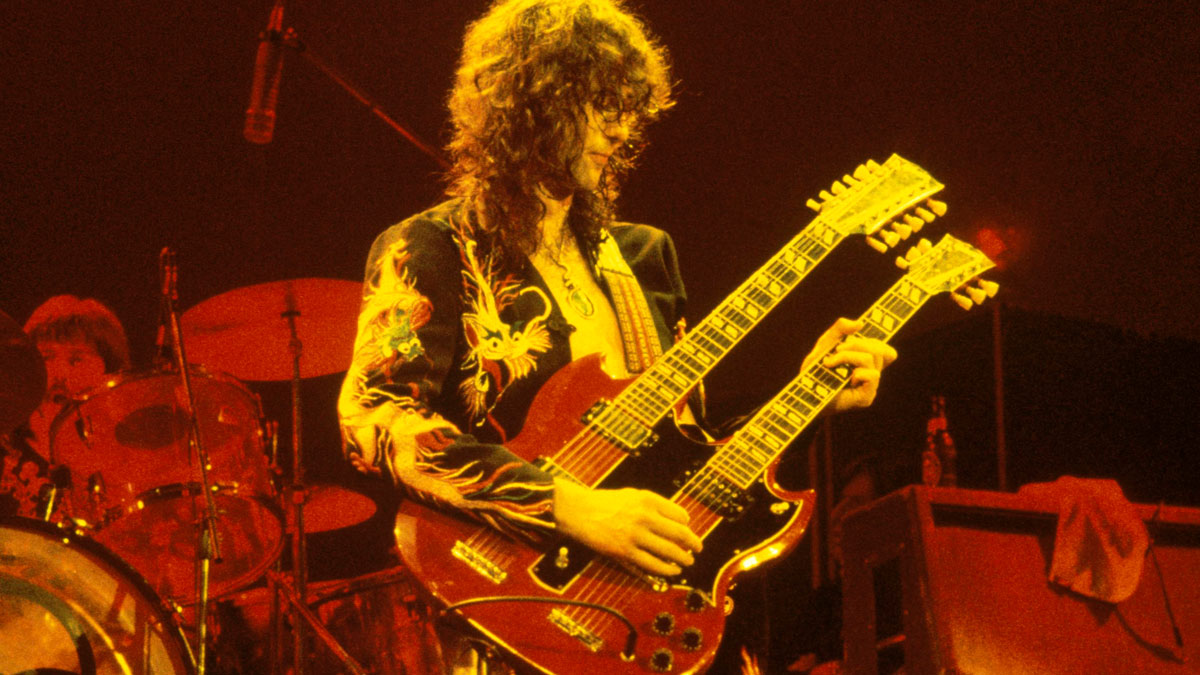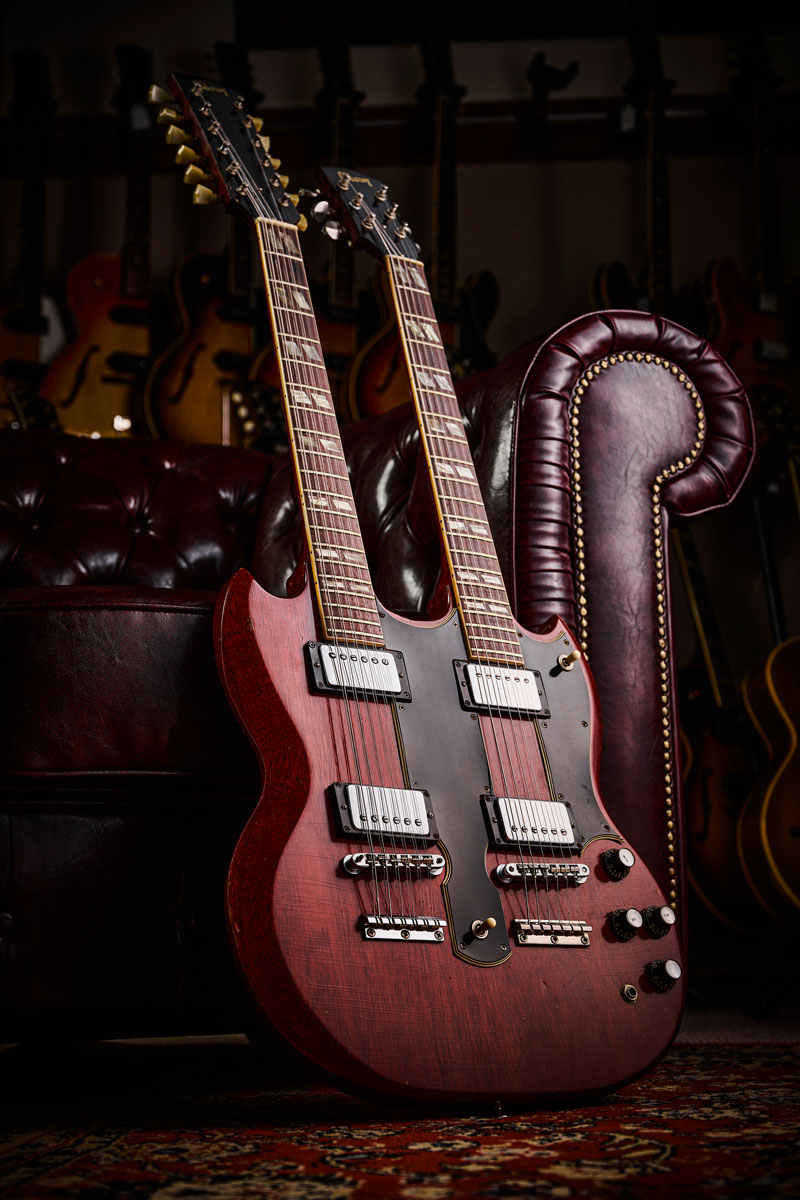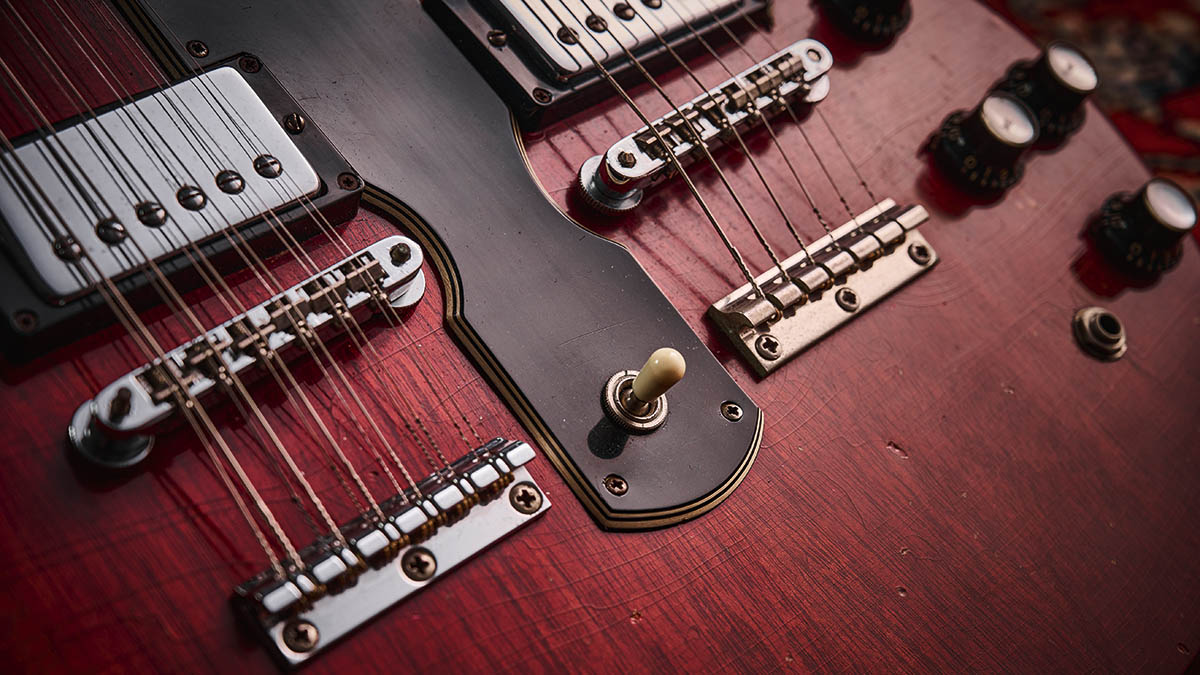“A completely new and exciting instrument… ”: How the double-necked Gibson EDS-1275 changed the course of rock guitar history
When it launched in the early ’60s, Gibson’s double-neck was seen as a novelty and had limited success – that is, until, Led Zeppelin’s Jimmy Page came along…

“Beethoven described the guitar as a ‘miniature orchestra’ – but he never had the opportunity to hear or play the modern Gibson Harp-guitar,” says the firm’s 1923 catalogue.
A hundred years ago, this obscure hybrid instrument may have appeared modern, but double-neck guitars were, in fact, around long before Ludwig van Beethoven (1770-1827). Electric Spanish-style double-neck guitars were, however, a novelty when players such as Joe Maphis and Jimmy Bryant were using them in the 1950s.
Subsequently, interest began to grow and in response to numerous requests for these unconventional instruments Gibson developed a pair of dual-necked electric guitars in 1957: the Double 12 and Double Mandolin.
Unveiled at the July 1957 NAMM Show, these rare, custom-order thinlines were constructed with a carved/arched spruce top and laminated maple back and sides. Sporting pointed/Florentine double-cutaways, the profile of these guitars is akin to the mahogany SG solidbody design introduced in the early ’60s via the Les Paul range, and it’s clear to see where the inspiration for this iconic shape lies.

Loaded with Gibson’s new PAF humbucker pickups, the Double 12 and Double Mandolin were offered in a choice of Sunburst, Solid White and Solid Black finishes. While both instruments were fitted with a regular 24 ¾-inch scale-length neck in the lower position, the Double 12 features a 12-string neck, whereas the Double Mandolin incorporates a shorter-scale six-string neck tuned an octave higher than standard.
Shipping figures show demand for both was relatively low; only 17 Double 12s and 15 Double Mandolins were sent out in 1958 – the highest totals in any year of production.

Nonetheless, it further showed Gibson had the ability to design and create novel instruments for the more adventurous guitarist. In ’58, they made an intimidating addition to the line-up alongside the newly introduced ES-335, EB-2, double-cutaway Les Paul TV/Junior, Flying V and Explorer.
Get The Pick Newsletter
All the latest guitar news, interviews, lessons, reviews, deals and more, direct to your inbox!
Reads the Gibson catalogue: “A completely new and exciting instrument… The Double 12 combines the conventional six-string guitar neck with a 12-string neck… The Florentine double-cutaway design provides easy access to the entire fret range of both necks.”
Easy access to the upper frets was of paramount importance to Gibson during the late ’50s and early ’60s, as shown in the slew of now classic guitar designs that appeared within those few short years.
In keeping, the single-cutaway Les Paul solidbodies transitioned to the Florentine double-cutaway SG-style, beginning with the Standard in late 1960 and followed by all other models in the range the following year. In a similar vein, the Double 12 was reworked into the Gibson SG-style solid‑mahogany body EDS-1275 in 1962, as was its Double Mandolin sibling (by this stage designated the EMS-1235).
Highlighted on the price list as “Special Order – Custom Instrument Department”, they appeared alongside a further variant, the Cherry Red Fuzz-tone-equipped EBSF‑1250 Double Bass six-string/four‑string bass double-neck.
Solidbody versions proved even less popular than the original thinlines and shipping records reveal scant numbers. Discontinued by the late ’60s, the EDS‑1275 was reintroduced in the mid-’70s and proved significantly more popular thanks to players such as Jimmy Page, Don Felder and Steve Howe.
The Evolution of the Gibson EDS-1275
- 1957: Gibson Double 12; carved/arched spruce top; maple back and sides
- 1958 to 1967: 110 shipped (Double 12/EDS-1275)
- 1959: 1275 designation
- 1962: EDS-1275; SG-style mahogany solidbody
- Late ’60s: Discontinued
- Mid-’70s: Reintroduced
- 1974 to 1979: 1,145 shipped
- Current: Custom Shop EDS-1275 Doubleneck; Cherry Red finish
- Guitarist would like to thank ATB Guitars in Cheltenham for showing us this fantastic guitar from the Bernie Marsden Collection.
Rod Brakes is a music journalist with an expertise in guitars. Having spent many years at the coalface as a guitar dealer and tech, Rod's more recent work as a writer covering artists, industry pros and gear includes contributions for leading publications and websites such as Guitarist, Total Guitar, Guitar World, Guitar Player and MusicRadar in addition to specialist music books, blogs and social media. He is also a lifelong musician.
“What blew me away was that everyone wanted the curly maple top. People were calling, saying, ‘I’ve got to have the bird inlays’”: Paul Reed Smith on raising the Standard 24, finally cracking the noise-free guitar and why John Sykes is a tone hero
“It combines unique aesthetics with modern playability and impressive tone, creating a Firebird unlike any I’ve had the pleasure of playing before”: Gibson Firebird Platypus review






![[from left] George Harrison with his Gretsch Country Gentleman, Norman Harris of Norman's Rare Guitars holds a gold-top Les Paul, John Fogerty with his legendary 1969 Rickenbacker](https://cdn.mos.cms.futurecdn.net/TuH3nuhn9etqjdn5sy4ntW.jpg)





